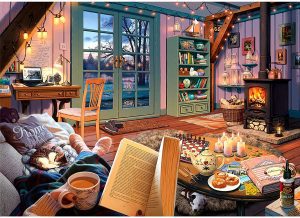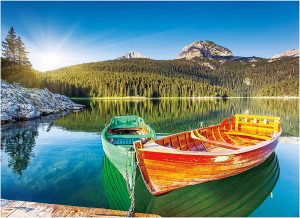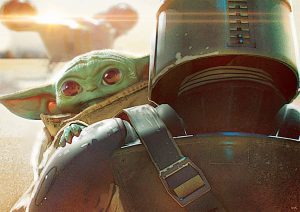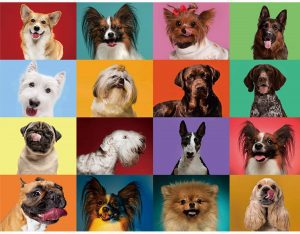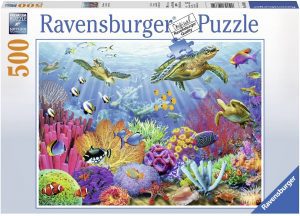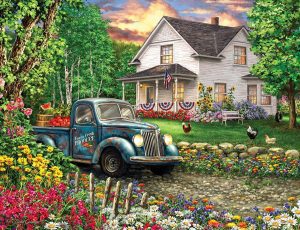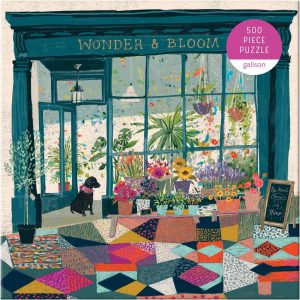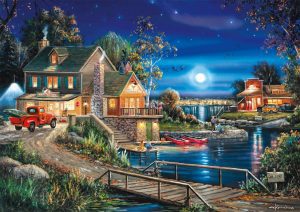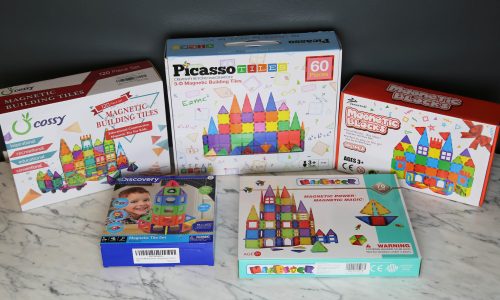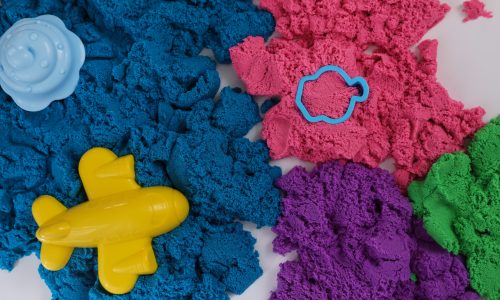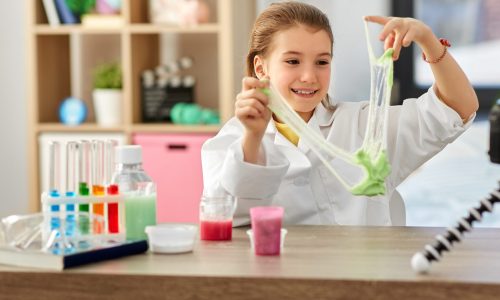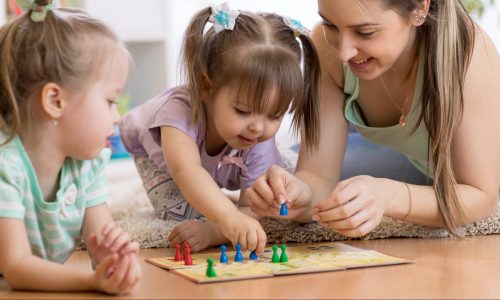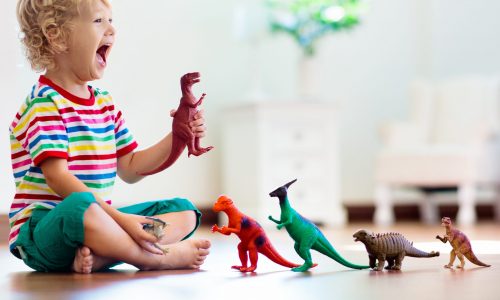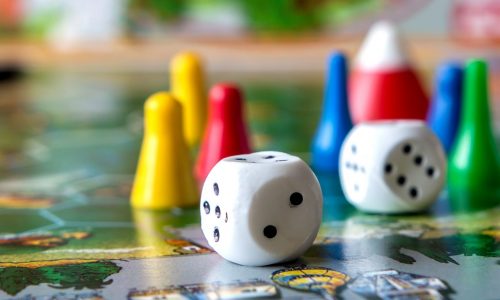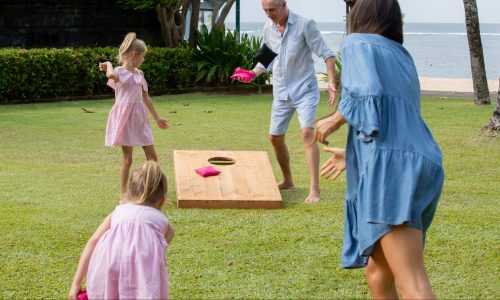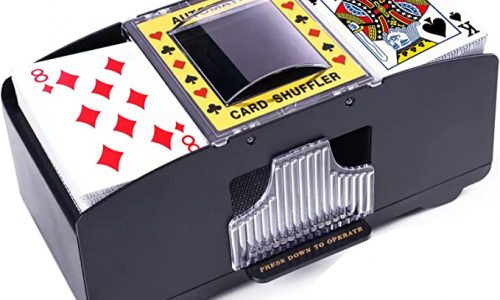The Best 500-Piece Puzzles
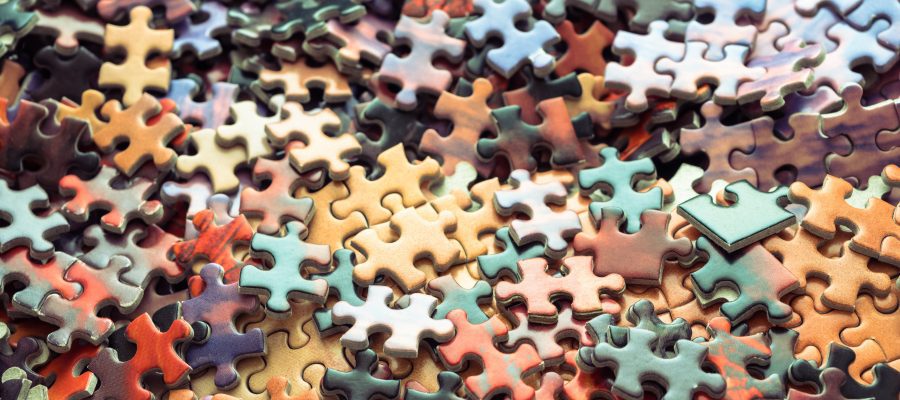
Our Review Process
Don't Waste Your Money is focused on helping you make the best purchasing decision. Our team of experts spends hundreds of hours analyzing, testing, and researching products so you don't have to. Learn more.
Our Picks For The Top 500-Piece Puzzles
- 1. Ravensburger Cozy Home Interior 500-Piece Puzzle For Adults
- 2. Toreta Scenic Lake 500-Piece Puzzle For Adults
- 3. Buffalo Games Star Wars Scene 500-Piece Puzzle For Adults
- 4. HighFun Dog Portraits 500-Piece Puzzle For Adults
- 5. Ravensburger Ocean Habitat & Animals 500-Piece Puzzle For Adults
- 6. Springbok Farmhouse Illustration 500-Piece Puzzle For Adults
- 7. Galison Local Plant Store Illustration 500-Piece Puzzle For Adults
- 8. Buffalo Games Rural Town Night Scene 500-Piece Puzzle For Adults
Choose from cozy and scenic 27-by-20-inch giant profile jigsaw puzzles by Ravensburger, depicting cute rooms or beachy vistas. You'll definitely want to jump in! Each piece is dust-free, completely unique and of premium quality.
A Relaxing Family RoomFeel a sense of accomplishment when you complete this large-profile puzzle.
Spend a relaxing afternoon putting together this 500-piece puzzle for adults. It features two docked boats on a majestic lake with the most beautiful mountains in the background. The puzzle is made from recycled cardboard that has been treated to keep the colors bright and vibrant.
Tranquil SceneThis 500-piece puzzle for adults is recommended for individuals between the ages of 8 and 99.
Want some pop cultural inspiration? Get your choice of Marvel heroes, "Star Wars" characters or Pokemon. These 500-piece puzzles for adults come with a full-size poster and use "perfect snap" tech. When finished, the 100% recycled item is 21.25 by 15 inches.
For Sci-Fi and Superhero FansIf you've ever wanted to work a puzzle with Marvel heroes or The Child, here's your chance.
How cute is this? This 500-piece puzzle for adults features 16 puppy breeds on different color-blocked backgrounds broken up into uniquely large-cut, 2-millimeter-thick pieces. It measures 20 inches by 14 inches once you complete it.
Putting Together Cute PuppiesYou'll love the look and quality of this dog puzzle so much that you'll want to frame it when it's done.
Buying Guide
Jigsaw puzzles are a relaxing way to pass the time, and they are also good for your brain. Studies show that these puzzles may improve visual-spatial reasoning and cognition. Putting them together takes a lot of focus, and doing so can improve problem-solving skills and short-term memory. On top of all that good stuff, puzzles can increase productivity and creativity, all while sparking imagination.
Some people like to put puzzles together without help, making them a good way to reset and unwind at the end of a long day. Others prefer a collaborative approach, turning puzzles into a fun activity for family members to enjoy together.
When choosing jigsaw puzzles, pick images you enjoy looking at; otherwise, you may lose interest. If you really like one particular picture, there’s always the option of framing it once you’re done with it. The pieces come in different sizes and amounts; the smaller the pieces and the more there are, the more complex the puzzle might be.
There are different types of puzzles, too, and some offer other types of difficulty that you might like. For example, gradient puzzles can have fewer pieces but are made with indistinguishable colors and images that repeat themselves. This kind of puzzle can be harder for some and easier for others, so personal preference plays a role in how much you’ll enjoy it.
A 500-piece one with distinct images is close to perfect for average jigsaw puzzle fans because this puzzle size generally isn’t as complicated as a 1000-piece — but not so simple that you finish it quickly. The average completion time for a 500-word puzzle ranges from 2-7 hours, so you can do it over a weekend. Large-size pieces are easier to see and handle, too. Look for puzzles made from thick cardboard that won’t rip on the sides or peel and ones that have Softclick Technology for smoother-fitting pieces.
The images on the pieces shouldn’t be grainy, either; that’s a sign of poor quality and can be frustrating when you try to fit pieces together. Good quality won’t cost you that much, though; you can get a 500-piece puzzle from a good brand for under $20.
What to Look For
- Jigsaw puzzles are also great stress relievers and natural mood boosters, especially when you click in that final piece.
- Choose a comfortable spot to work on your puzzle with a cozy chair and a flat surface.
- To start a jigsaw puzzle, empty all the pieces and turn them right-side up. Keep the image close by for a reference, and sort the pieces into groups according to colors and patterns.
- Most people assemble the borders first and work in small sections at a time.
- If you can’t finish the puzzle due to its difficulty, don’t force it; it’s OK to walk away. Try an easier one or one that more suits your style.
- You may wish to consider purchasing a puzzle keeper, puzzle mat or puzzle board, if you don’t think you’ll finish the puzzle in one sitting and would like to store or move it out of the way when you’re not working on it.
More to Explore
Legend has it that the first jigsaw puzzle was invented by a London mapmaker named John Spilsbury in the 1760s. According to “The Jigsaw Puzzle: Piecing Together a History” author Anne Williams, Spilsbury pasted a regular map on top of a thin piece of wood and cut it into pieces with a handheld scroll saw. Spilsbury cut out individual countries like Germany and England into single pieces, and educators used the puzzle map to teach children geography.
Years later, puzzle makers created puzzles with pictures of fairytale subjects, trains and nursery rhymes. Such puzzles were called dissected puzzles at first. They didn’t get the name jigsaw until that saw, which worked well with curves, was invented in about 1880. Then, the Parker Brothers’ toy company created hand-cut, interlocking pieces in the early twentieth century, and the rest is history. Later, cardboard puzzles became more popular, and by 1950 the die-cut process used in modern puzzles was standard.

